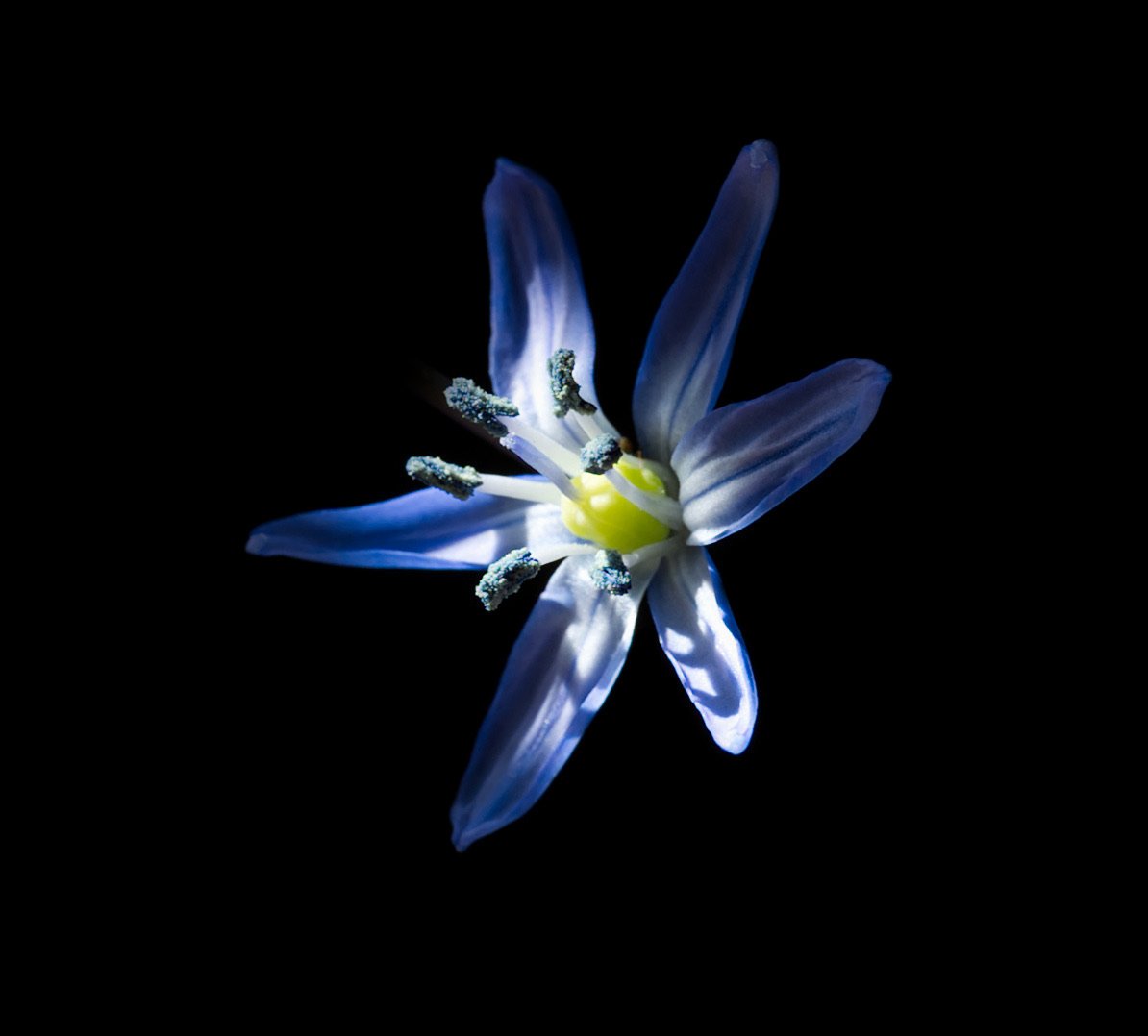The Siberian Squill
The history of Scilla, what a true blue flower is, and how the English misunderstood the Russians.
Scilla siberica, March 16th
Chemical structures of the three main types of anthocyanins
One of the more persistent rumors in amateur horticultural circles is that the color blue does not exist in the natural vegetative world. Blue pigment, indeed, is relatively rare in flowers, but it does exist (at least by scientific definitions). Some estimate around 10% of the nearly 280,000 species of flowering plant make blue flowers. Considerable man- (and woman)- power has been devoted to the fabrication of true blue varietals. In 2018, in an effort to make something especially unique, Naonobu Noda and his team engineered the first true blue chrysanthamum. It took them 16 years of floral manipulation.
“There are so few flowers that are absolutely true blue, and Siberian squill is one of them.”
The visual perception of color in plants comes from a complex interaction of pigment, pH, and metal ions. The primary pigment responsible for blue coloration is anthocyanin, and it is this pigment that hybridizers, genetic engineers, and botanists tweak when making new species. Anthocyanin is also found in Acai, Black raspberry, red cabbage, and a number of other foods commonly consumed for their antioxidant health benefits. It’s sold in an isolated form, C3G (or cyanidin-3-glucoside), for similar reasons.
Scilla and friends
Along with the morning glory (Ipomoea tricolor) and cornflower (Centaurea cyanus), Scilla contains anthocyanin and is considered truly blue. Also known as Siberian squill, it originates from Russia but has never grown as far north or east as the name would imply. It is native to the southern warmer regions of the old Soviet Union, the Crimea, and the Caucasus. These naming foibles occurred as a result of the flora exchange between Europe and Russia. Botanists in both places kept in close contact, but the plant's journeys were slow and logistically clumsy. Labels fell off, boxes would rot, specimens and documents were lost or destroyed. “Lack of accurate information about plant distribution gave rise to misunderstandings and false assumptions. Some plants received names that by no means corresponded to the location of their natural habitat” according to Tatyana Shulkina for the Missouri Botanical Gardens. Such was the story for ‘Siberian’ squill.
Like Winter Aconite, Scilla is a spring ephemeral, as are most of these early bloomers. They are untroubled by rodents or deer, and multiply rapidly. They enjoy woodlands, subalpine meadows, and seashores throughout Europe, North America, Africa and the Middle East are now considered invasive (but beautiful) in a number of states. It is very hardy and cold tolerant, blooming right after the snow melts in most places.
Knowledge Sources
https://www.longfield-gardens.com/article/all-about-scilla
https://www.gardenia.net/plant-variety/scilla-varieties
https://www.minnesotawildflowers.info/flower/siberian-squill
https://extension.umn.edu/identify-invasive-species/squill
https://en.wikipedia.org/wiki/Scilla
https://gobotany.nativeplanttrust.org/species/othocallis/siberica/
https://www.chicagotribune.com/news/ct-xpm-2005-04-17-0504170302-story.html
http://www.mobot.org/MOBOT/research/russia/historical.shtml
https://pubchem.ncbi.nlm.nih.gov/compound/Cyanidin-3-glucoside
https://www.treehugger.com/the-science-of-blue-flowers-4864085
https://theproducenews.com/japanese-scientists-create-true-blue-chrysanthemum
Image Sources
https://commons.wikimedia.org/wiki/File:Figure_1_Chemical_structures_of_the_three_main_types_of_anthocyanins.jpg




